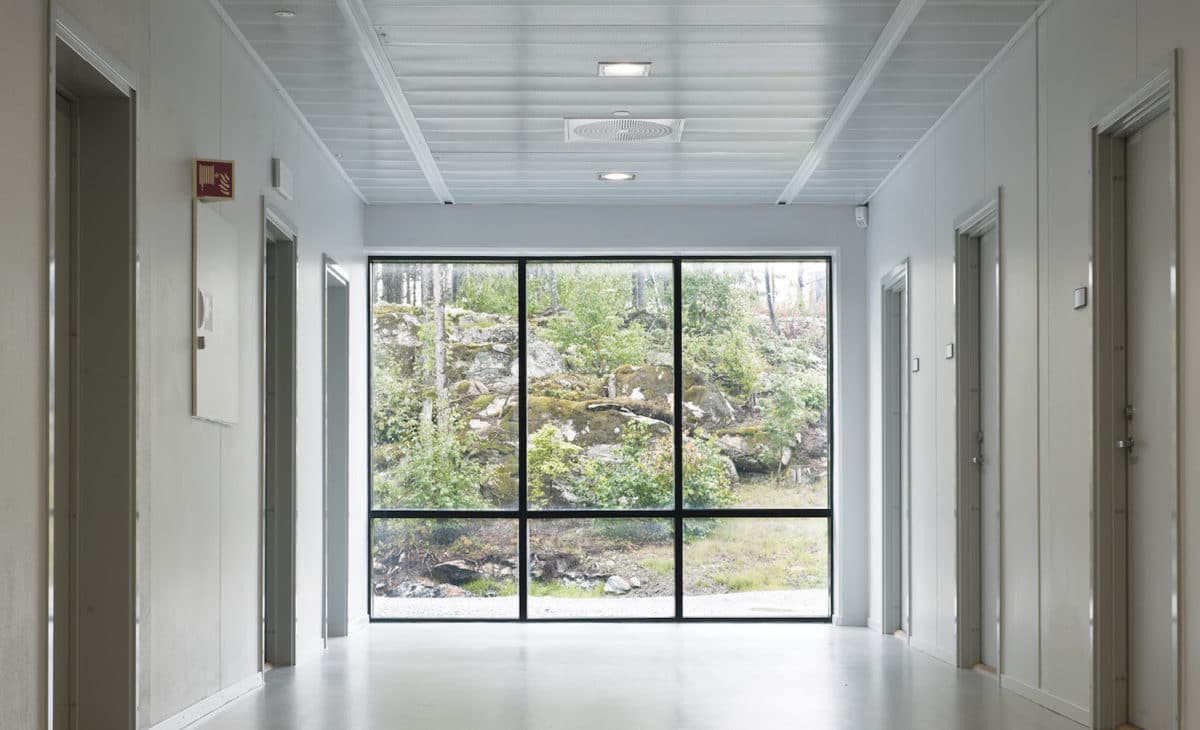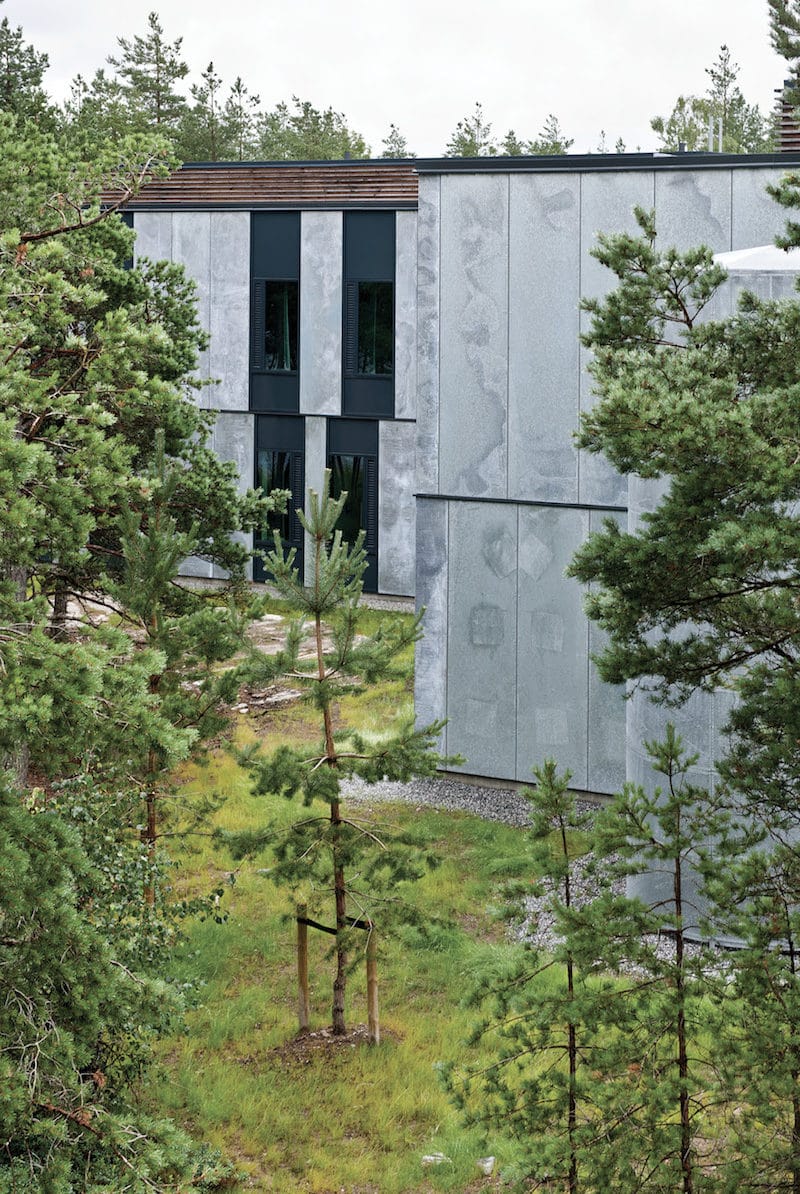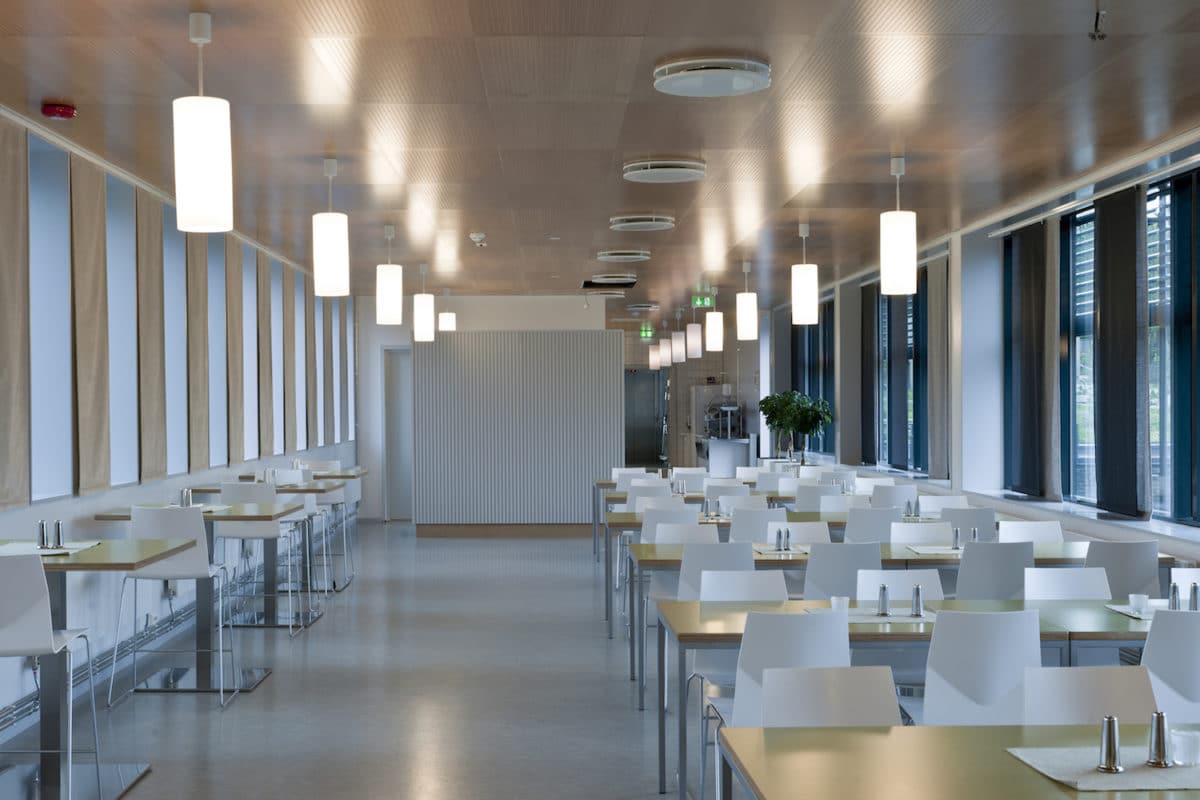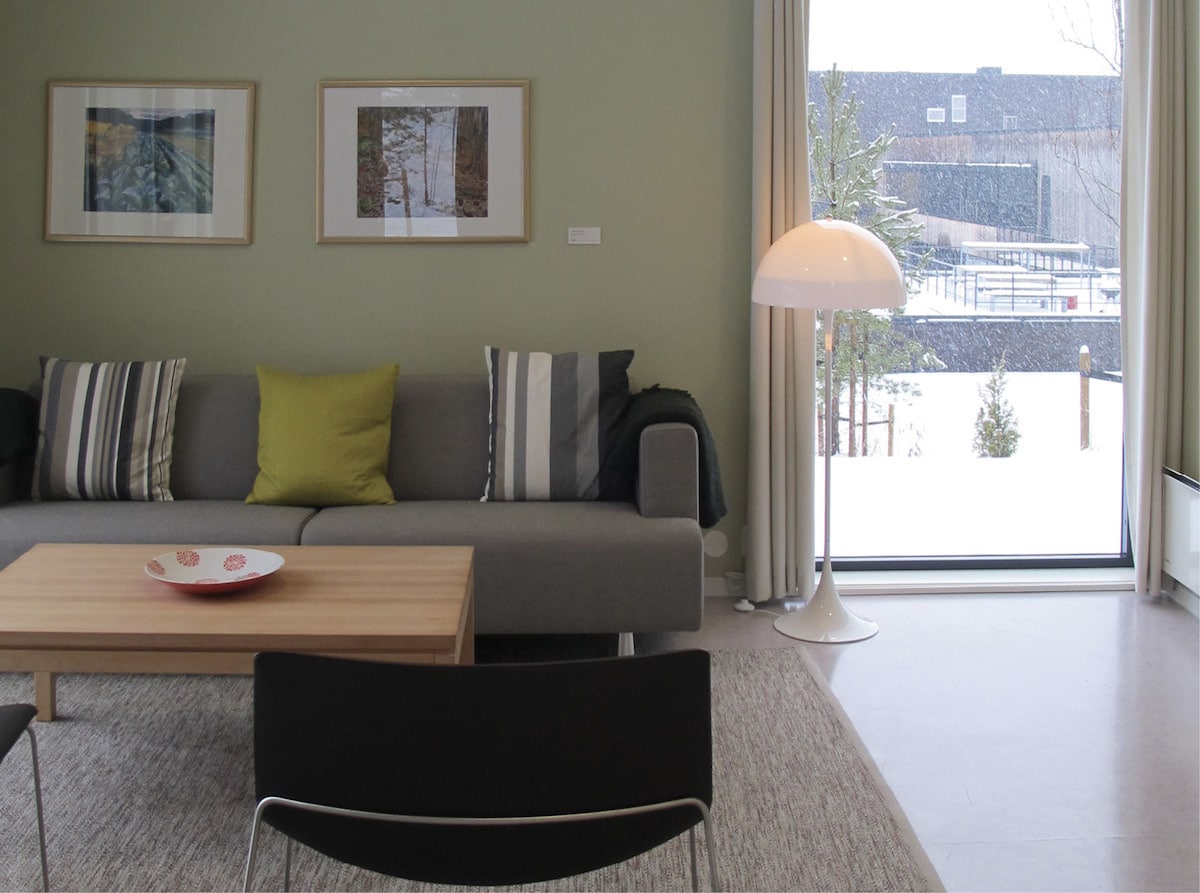
[Photo: Erik Møller Arkitekter; HLM Arkitektur]
In the United States, over the course of five years, 50% of released prisoners will return to prison, according to a Stanford Law School report. This rate of recidivism is evidence that our penal system is broken. A new system focused on compassionate rehabilitation rather than punishment must be considered.
The US prison population is uniquely burdensome compared to other countries. The Center for Prisoner Health and Human Rights says the 2.2 million people imprisoned in America account for a quarter of the population of people incarcerated worldwide. And one in 31 US residents is under the control of the criminal justice system. Prisoners make up an invisible class of citizens—politically unrepresented and removed from daily life.
Though this invisible class constitutes a significant percentage of our citizenry— and economy at $50 billion per year—in the design world, architects are seldom hired to devise socially productive, rehabilitative prisons. And yet, from 1990 to 2005 the government built more than 500 new correctional facilities, an average of nearly one new facility every 10 days. The cultural shift toward designing healthy, rehabilitative prisons can be led by the world of architects and designers.

[Photo: Erik Møller Arkitekter; HLM Arkitektur]
In Norway, after declining in 2010, incarceration rates have slowed in concert with the reprogramming and redesigning of prisons to be centers for learning, healing, and growing. Halden Fengsel, a maximum-security prison in Halden, Norway, by Erik Moller Arkitekter and HLM Arkitektur, is designed with light-filled spaces, natural ventilation, arts programming, and recreational activities for inmates.
With light wood finishes and modern furniture silhouettes, Halden Fengsel feels less like a jail and more like an upscale dormitory. The landscaping generates clear and open sightlines into nature from the interior space. With growing evidence that views of nature decrease convalescence and increase well-being, the landscaping is essential to the success of a scheme alluding to freedom. All the while the very near, and very real, multistory concrete perimeter wall fades into the background of the campus’s coniferous forest.

[Photo: Erik Møller Arkitekter; HLM Arkitektur]
Natural light, air, and open circulation are, to anyone who has gone without them, clear measurements of freedom. Even Dostoyevsky, writing in the 19th century, wrote, “Low ceilings and tiny rooms cramp the soul and mind.” If we focus our expectations as a society toward healing prisoners rather than solely punishing them, the ways in which we choose to design spaces will inherently evolve in more fluid and open ways. OOIIO Architects designed a female prison centered precisely on this concept—how to make a prison feel less stagnant and more free.
The intent to generate mobility and movement, traits not often included in prison design but important for physical and psychological well-being, are palpable in OOIIO sections. The plan feels open and breathable, in part through the inclusion of vast green roofs and walls. These green elements change with the season, making prison life less monotonous and more human, according to OOIIO.

[Photo: Erik Møller Arkitekter; HLM Arkitektur]
The opportunity to make a positive and lasting difference through design in the lives of those who need it most is all around us. More than 50% of prisoners suffer from untreated mental illness, according to an article in The Atlantic, while 50% of prisoners are classified as non-violent, according to a report from Stanford Law School. Can American designers learn from European nations successfully focusing on rehabilitation and begin to make a systemic change in the US today?
Initiatives like the WELL Building Standard and Fitwel provide market evidence that in the US, consumers, developers, and designers are investing for the future in health and wellness. In fact, according to Fitwel and the Centers for Disease Control and Prevention, 49% of building owners are willing to pay more for buildings if they’ve proven to have a positive impact on health.
The market is driving up demand for health and wellness-based architectural strategies. It is imperative that the structures and systems that need this transformation most, such as prisons, not get left behind while commercial and residential buildings move in this important, beneficial direction. The more we invest in the health of our systems, the more we invest in the personal health of our societies, local and at large.
 Lea Hershkowitz is an interior architect with a master’s of design from the Rhode Island School of Design, where she currently teaches research design. Lea’s graduate thesis from RISD developed an architectural strategy to reduce prison recidivism by infusing prisons with learning and healing via healthy, innovative, in-prison manufacturing.
Lea Hershkowitz is an interior architect with a master’s of design from the Rhode Island School of Design, where she currently teaches research design. Lea’s graduate thesis from RISD developed an architectural strategy to reduce prison recidivism by infusing prisons with learning and healing via healthy, innovative, in-prison manufacturing.
